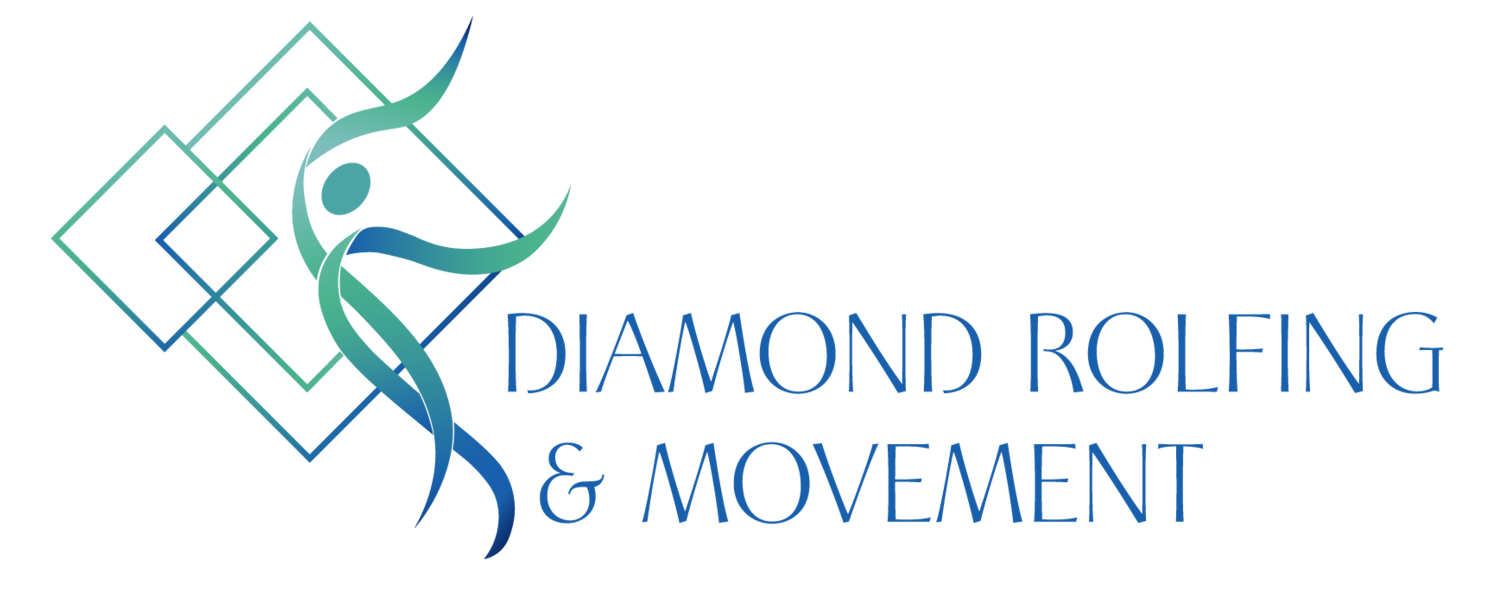FAQs
Why do people seek out Rolfing?
Most people seek out Rolfing to help relieve pain, discomfort, or impaired mobility. Others come to Rolfing because they want to address poor postural issues and increase their overall body awareness. Rolfing increases comfort and ease and augments personal growth. People of all ages can benefit from Rolfing. The sooner that strain patterns are addressed the more quickly they can be resolved. There are only a few conditions that are contraindicated. Please reach out if you have concerns.
What kinds of issues can Rolfing treat?
Rolfing treats many issues including lower back and neck pain, tendonitis, tight and sore muscles, headaches, TMJ disorders, foot/ankle pain, repetitive movement issues, poor posture, injury and surgery rehabilitation, frozen shoulder and rotator cuff injuries, scoliotic patterns, pelvic imbalances, and detrimental movement habits.
What is the first session like?
The session begins with a brief health intake where we define your goals, discuss physical history, answer questions and check in as to how you are currently feeling. You will then be asked to do a few simple movements such as walking, bending your knees, or reaching your arms. From the intake and observation of these movements, Kelly will formulate a treatment plan. As the session progresses, Kelly will make adaptations to the plan based on your experience and feedback. Kelly will use her hands, forearms, and elbows to address and release whole body strain patterns. The work is administered either lying down, seated or standing. As we work, it is common for you to be asked to move in subtle ways to encourage movement and awareness to the area. At the end of the session, you will be asked to briefly walk once again to help integrate yourself back into gravity. We may discuss “movement homework” that will help reinforce the structural changes achieved.
What happens after the first session?
Rolfing treats the whole body systematically; therefore a thorough treatment plan requires a series of sessions. The exact number of sessions is based on individual needs. It is recommended that you try an initial session to see how it feels and to help Kelly determine the best treatment plan for you. Typically, for a client new to Rolfing, it is ideal to receive at least three sessions closer together in order to reinforce the patterns that are beginning to shift. These sessions can be spaced 1-2 weeks apart. Clients with more acute issues may receive weekly treatments for some time. After completing a series, many clients opt for regular “tune ups.” Tune ups can be spaced 4-6 weeks apart.
What does Rolfing feel like? Is it painful?
Rolfing uses a range of superficial to deeper touch. The work is slow and methodical which allows the client’s nervous system to respond to and integrate the changes achieved in an appropriate and comfortable way. Each Rolfing intervention is adjusted to meet the client’s specific needs. Kelly will always work within the client’s comfort zone.
How is Rolfing different from other treatments like massage and chiropractic?
Rolfing addresses whole body imbalances through methodical unwinding of the soft tissue system. The changes can be profound and long lasting. Massage is a broad term that refers to many styles of bodywork. The focus is often on relaxation and releasing muscle tension, not structural balance. Chiropractic seeks to balance the spine and other bony structures which impact nervous system functionality. It often has a whole body view but does not usually take into consideration the soft tissue system which surrounds and affects the bones. Rolfing, massage and chiropractic can be used together in a complimentary way.
What do I wear?
Skin contact is preferred. Most people usually wear underwear. If you are more comfortable in loose fitting shorts and a sports bra or bathing suit these can work as well.
How long are sessions?
All sessions (including initial session) are 75 minutes.
How much do sessions cost?
Sessions are $150. Check, cash or Venmo is preferred, but credit cards are also accepted. Many clients choose to use their HSA and FSA. Most companies allow funds to be used for Rolfing. Please check with your provider beforehand.
What does it mean to be a Certified Advanced Rolfer?
When you work with a Certified Advanced Rolfer this means that the practitioner has done additional training beyond the basic Rolfing Certification to enhance one’s efficiency in body reading, increase range of touch skills and apply more specific spinal and pelvic biomechanical techniques.
Is Rolfing covered by insurance?
Unfortunately, our office does not process insurance. In some specific cases, receipts can be provided for you to submit directly. There is no guarantee of what might be covered or reimbursed.
What is the cancellation policy?
When scheduling an appointment you acknowledge and agree to the cancellation policy. Sessions missed or cancelled within 24 hours of appointment time will be liable for the full session fee ($150). All fees collected from cancelled appointments will be applied to a scholarship fund serving to help bring Rolfing to individuals facing financial challenges.
